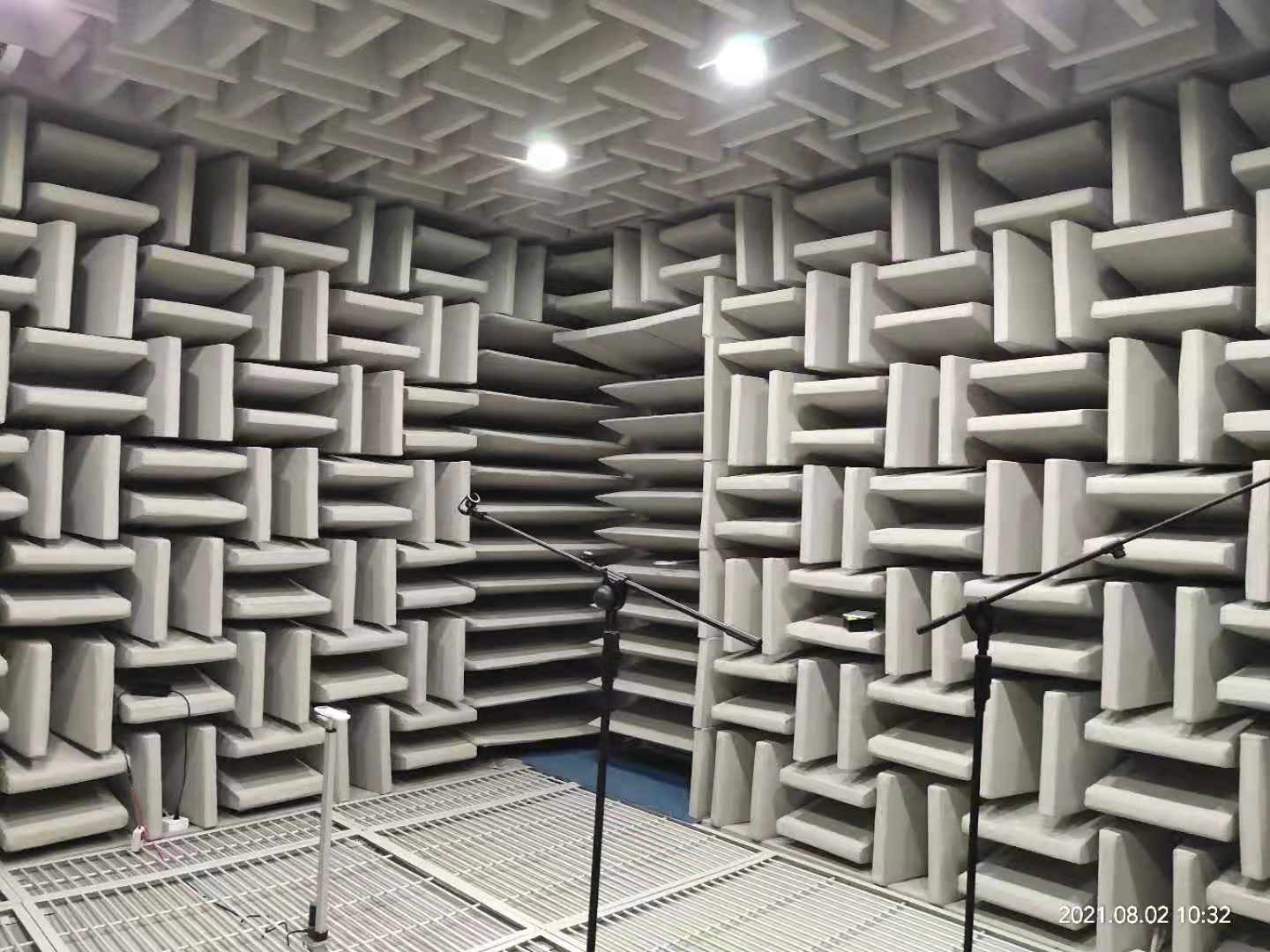The design principle of the anechoic chamber is based on the structure, acoustics, and noise testing, and meets the following requirements: the anechoic chamber structure meets the national standard ISO3745, the noise source power measurement (acoustic effect) meets the anechoic chamber and semi-anechoic chamber precision method standard GB6882, and the equipment air noise test standard meets ISO7779.
The acoustic design principle of the anechoic chamber is to eliminate interface reflection and form a free sound field in the anechoic chamber. Therefore, it is necessary to install a sound-absorbing wedge to achieve this, forming an artificial free sound field, and the sound emitted by the object in the anechoic chamber is completely absorbed without reflection sound.
The structural principle of the anechoic chamber needs to meet the basic requirements of the building room design, and under the conditions of vibration isolation, sound insulation, and sound absorption, it also needs to meet the basic requirements of fire prevention, moisture resistance, shock resistance, ventilation and heat dissipation. The structure of the static ring anechoic chamber adopts a room-in-room heavy wall and a layer-light sound insulation wall. The main structural design principles of the anechoic chamber are as follows:
1. The vibration isolator is located below the horizontal plane, and adopts elastic suspension vibration isolation foundation isolation and vibration isolation trench structure, which has all-weather anti-interference ability to external noise;
2. A new type of sound-absorbing and sound-absorbing composite sound insulation wall is adopted. The main frame is a keel frame structure, and the wall is composed of multi-layer materials. While meeting the basic structural requirements, it effectively plays a sound insulation and sound absorption effect, and the effective sound insulation volume is ≧45dB;
3. The anechoic chamber is surrounded by sound-absorbing wedge-type sound absorbers, which need to be installed on the top of the semi-anechoic chamber and the floor of the full anechoic chamber. By installing the sound-absorbing wedge, a free sound field is formed inside the anechoic chamber;
4. In addition to the above points, the anechoic chamber structure should also meet the basic ventilation and heat dissipation, line layout and other requirements of the architectural design.
The above are the basic principles of the anechoic chamber structure and acoustic design. In simple terms, a series of sound insulation materials are used to establish an artificial free sound field that meets the test to meet the acoustic requirements of product testing.

